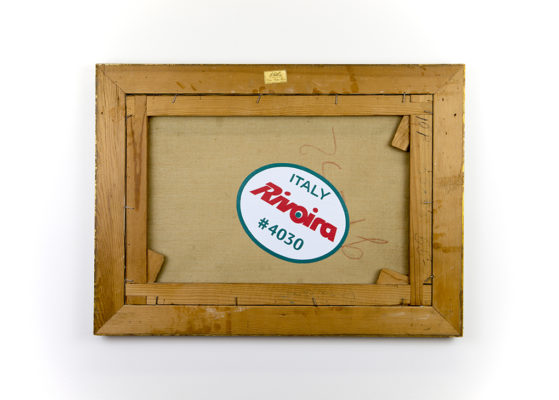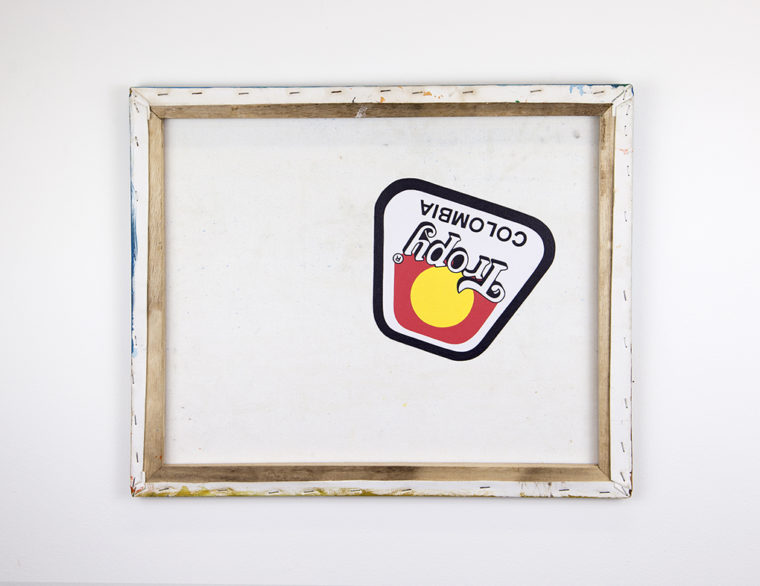Search
To search for an exact match, type the word or phrase you want in quotation marks.
A*DESK has been offering since 2002 contents about criticism and contemporary art. A*DESK has become consolidated thanks to all those who have believed in the project, all those who have followed us, debating, participating and collaborating. Many people have collaborated with A*DESK, and continue to do so. Their efforts, knowledge and belief in the project are what make it grow internationally. At A*DESK we have also generated work for over one hundred professionals in culture, from small collaborations with reviews and classes, to more prolonged and intense collaborations.
At A*DESK we believe in the need for free and universal access to culture and knowledge. We want to carry on being independent, remaining open to more ideas and opinions. If you believe in A*DESK, we need your backing to be able to continue. You can now participate in the project by supporting it. You can choose how much you want to contribute to the project.
You can decide how much you want to bring to the project.

A few weeks ago, American artist Brad Troemel discussed in his Instagram stories the usefulness of entering an MFA Program. It was common, he said, that after finishing a degree, artists found it difficult to continue researching and producing on a regular basis. This could lead many of them to invest large sums of money in doing a master’s degree at a prestigious school, assuming a debt that could last a lifetime. Troemel dissuaded his audience by saying that, in the art world, the place where you have studied doesn’t matter much. No gallery, he said, was governed by the postgraduate list of any educational program. It encouraged them to use that money to rent a studio, to join other people in reading groups, to contact artists they were interested in, to disseminate their work in Instagram, and so on.
It is true that digital technologies are useful tools to make us visible and that no program is worth what it costs. Troemel’s advice would seem reasonable. But let’s not forget that it is aimed at young people who live in very specific places. The artists that Troemel addresses, I think, can face different problems. Their art world – much more than ours – is based on a profoundly neoliberal system, which, increasingly, makes it difficult for those with scarce economic resources to have access to opportunities, increasing precariousness and competitiveness among them. However, they belong to those cities or countries that have the academic legitimacy, the market, the media and the institutions that, working together, will establish which art will be international – that produced outside and within their borders.
I transfer his advice to our context; a periphery of art. It is inevitable to see, in the lists of artists of many galleries, certain similarities in the lines of curriculum, even in the idea of art that they project in their statements, promoted by these programs abroad. But how many artistic agents visit the studios of Fine Arts students at our universities? One of the things that surprised me the most when I did my Erasmus in London was that the most important galleries attended the final year or master’s exhibitions of these universities and, from time to time, offered a show to some recent graduate, or even bought their work. Beyond the speculative nature that these actions could have, and the expectations that they generate, which could have negative repercussions on artists who were still very young, they were a symptom of an interest in the new things that were being generated in their universities; a care for what was close and a good administration of resources. On the other hand, artists from the periphery are faced with the need to emigrate, taking a tremendous turn, to end up being represented by a local gallery, after having been previously validated by outside institutions. It is schizophrenic behaviour, an immense waste of energy and resources and denotes a lack of confidence in our own criteria.
It is naïve to think that the globalization of the art world gives us all the same opportunities. Although there have been achievements, the panorama is not so different from the one described by Gerardo Mosquera in the nineties, although it would be possible to establish an important difference between south and north, also in Europe: “(…) A very centralized system prevails in large circuits of museums, galleries, publications, collectors, markets, etc. that exercises legitimating power on an international scale from Eurocentric criteria and even central Manhattan. These central circuits have the money and invest it in the construction of “universal value” from their points of view and those of the market”[1]. (p. 72) The structure that makes up the artistic fabric of the hotspots – galleries, institutions, schools, residences, media – and the fuel that makes it work – collectors, state subsidies, etc. – is a more or less closed circuit. It is strange to find exhibitions of artists from outside, unless they have studied or live there, or have already reached the nirvana of internationalisation. It is also self-sufficient. The parties – institutions, market, education and media – reflect and support each other. A joint effort of these characteristics already happened in the 1990s in Mexico, and the results are well known to us [2].
We know that winning important prizes and exhibiting in prestigious spaces at the local or national level does not ensure that we can chain opportunities that build a healthy artistic career without the imperative of going outside. In spite of having a wide network of institutions and galleries, there is a moment in which the opportunities at the local level of our contact reach a limit. It seems logical to consider investing time and money in making an MFA; even reprogramming yourself from scratch starting the career and your work again in one of those places. Either you’re international or you can’t be, it seems. When you go outside, those lines in the curriculum – only we know how much it costs to write them – lose weight. We equate them to some exhibition in a not too serious space in which we once exhibited in Berlin, so that the foreign interlocutor can at least read something recognizable. I will always be grateful to my gallery at the time who, seeing that I lived in a converted London fire station, in unhealthy conditions, paying the rent as a catering waitress, made me realize that perhaps I could channel that effort in a different way if I returned home. The first ones to subtract value from the things we have, from the world of art we have and participate in, are us. “I only buy gringo artists,” told me a Spanish collector I met in Mexico. A great administrator of his money, he bet on those artists who, he knew, had a solid and infallible structure behind them, which would ensure continuity in their practice and increase the value of their work.
In a recent talk and discussion at the Tallinn EKKM entitled Art Off the Air. Air consumes too much from our bodies, between Kim Modig and Marina Valle Noronha, they directed their talk to “precarious art professionals in `off-site´ cities”. They questioned the why of the need or obligation to travel so much to try to belong to the art system: “It´s time to move on from being either in or out. We should not be defined based on what goes down in some global hotspots, and wether we were there. Mobility is a privilege forced on everyone. Are you tired? We are. Every exhibition feels too big, and every trip unnecessary except the ones you make for love. We want to stay in, not check out. We want the kind of art world any body can handle.” It is worth asking ourselves if, instead of having a mirror permanently focused on what is happening outside, we could free ourselves for a while from the imperative of having to participate in their debates, exhibit in their spaces and appear in their magazines. We could invest part of those resources and energy in strengthening what we already have and building from there. Working without the pressure of success, as the Guerrilla Girls used to say. I am not talking about identity marks -on the other hand, still very present in the great artistic events and curatorial discourses, which catalogue artistic production as if they were the Olympics- but about understanding them as ours, activating them from our subjectivities, taking more care of ourselves and working together; “(…) making contemporary art also from our values, sensibilities and interests”[3] . Perhaps our greatest problem is not that of internationalization, but what causes the need to seek it in the first place. We cannot generate interest outside if we do not value, in the first place, what happens in our immediate environment; otherwise, we run the risk of being a mere low cost reflex from outside.

[1] Mosquera, G. (1994): Algunos problemas del comisariado transcultural. In Caminar con el diablo. Textos sobre arte, internacionalismo y culturas (p. 72). Madrid: EXIT.
[2] The colombian historian Daniel Montero explains the mexican case in his book El cubo de Rubick, arte mexicano en los años 90 published by La colección académica.
[3] Mosquera, G. (1992): El síndrome de Marco Polo. In Caminar con el diablo. Textos sobre arte, internacionalismo y culturas (p. 19). Madrid: EXIT.

Cristina Garrido is a visual artist born in Madrid in the year Chernobyl´s disaster took place. In 2007 she fell in love with London when she was an Erasmus student and spent there part of her twenties. She now lives in her hometown, where she combines her artistic practice with teaching.
"A desk is a dangerous place from which to watch the world" (John Le Carré)